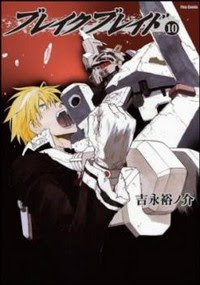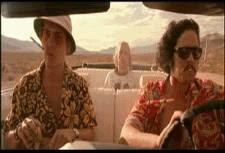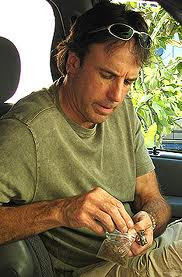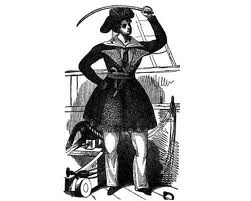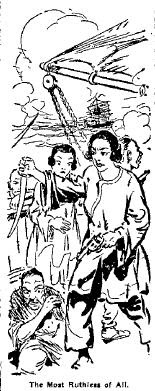A little while ago I ran across an article on sexism which just happened to reference pirates as a good example of sexism at play: by our perceptions of pirates as male and our reinforcement of this perception by creating stories centring on male pirates. Apparently the thought of pirates being female, pirate captains in particular, is a little hard to swallow. Well, this was not exactly a shock to me but I still hummed in disappointment over one girl's reaction to the idea of female pirates, which was to say that "everyone knows the best pirates are boys". Obviously, she didn't know enough about female pirates and she had also become blinkered by seeing mainly the male pirates having the stage when it comes to action and leadership. Now, I'm not going to weigh in on the sexism debate, at least not where pirates are concerned, as even in history the number of female pirates and pirate captains were less than those of males. What I will weigh in on is the spreading of information on female pirates so that you at least know of one of two interesting ones when confronted by the female pirate issue.
So here's a few female pirates, fictional and real, you might like and/or fear. There are definitely quite a few I wouldn't have wanted to cross...
The Chinese female pirate Ch’iao K’uo Füü Jëën from 600 B.C. who may be mythical.
Queen Teuta of Illyria who lived from 232 B.C. to 228 B.C. near the Adriatic Sea.
The Norwegian Rusila may or may not be fictional but is said to have fought her brother for the thrones of Denmark and Norway. She is also possible part of or the origin of the Ingean Ruadh or Red Maid from Irish folklore. Rusila also had a sister, Stikla, who became a pirate to escape being married.
Princess Sela, who was the sister of the king of Norway, Koller, in c. 420 A.D., was apparently a skilled and experience warrior pirate. She fought to stop her brother Thrond from gaining the throne. She was eventually killed by the mann who could have been King of Jutland, Horwendil, but gave up the position in order to become a pirate. A man who'd been attacked by Koller only to see Koller dead.
The Norwegian pirate Alvid who lead many male and female pirates.
The Norwegian pirate captains Wigbiorg, Hetha and Wisna who lived in c. 8th century A.D.. Wigbiorg is said to have died in battle while Hetha became the queen of Zealand. Unfortunately for Wisna, she lost a hand in a duel and he career as a pirate is unknown from there.
The Swedish pirate Alfhild from post-850 A.D., sometimes said to live during the 5th century instead, is possibly fictional.
Ladgerda from c. 870 A.D. was apparently the inspiration for Ermintrude in William Shakespeare's Hamlet.
The English pirate Æthelflæd, aka The Lady of the Mercians, lived from 872–918 and was a pirate from 911-918. She was the Eldest daughter of Alfred the Great of England, a military leader of the Anglo-Saxons and commanded her fleets against the Vikings.
The French pirate Jeanne-Louise de Belleville was a pirate from 1343-1356 and was known as the "Lioness of Brittany". The worked to avenge the execution of her husband by attacking only French sea vessels.
The Irish Gráinne Ní Mháille, aka "The Sea Queen of Connaught", lived from 1530-1603. She was the Queen of Umaill, chieftain of the Ó Máille clan and a pirate. She appears in Irish folklore as well as Irish history.
The English pirate The Red Lady Veronica lived from 1500–1534 and was a pirate from 1528 - 1534. She never revealed her true identity and disguised herself as a singer and entertainer so that she was brought onto ships. Once alone she'd remove her disguise to reveal a top and pants, unusual at the time, along with her weapons. Once ready she'd then go kill everyone aboard and steal the ship.
The Morroccan pirate Sayyida al Hurra was a pirate from 1510-1542. She allied with the Turkish corsair Barbaros of Algiers in order to control the western Mediterranean Sea at the time when Barbaros controlled the eastern Mediterranean Sea. She became Queen at the death of her husband and later married the King of Morocco.
The English pirate Lady Mary Killigrew was a pirate from 1530-1570. She was the daughter of a Suffolk pirate and wife of Sir Henry Killigrew who was also a former pirate. Sir Henry became the Vice-Admiral and was put in charge of fighting piracy by Queen Elizabeth I. While the husband was away Lady Mary took her household staff as ships crew. While Queen Elizabeth may or may not have know of this she was at least annoyed when Lady Mary attacked, took possession and sold a ship owned by the Queen's friend. Through means uncertain she managed to bargain for jail time rather than death. While she did give up piracy she apparently didn't give up being a crook as she proceeded to fence stolen goods from then on in.
The Caribbean pirate Jacquotte Delahaye was a pirate during the 1650s-1660s and was also known as "Back From The Dead Red". She had red hair and return to piracy after faking her death. While faking her death she dressed as a man for several years.
The French pirate Anne Dieu-le-Veut, aka Marie-Anne, was born around 1650 and was a pirate from the 1660s-1704 in the Caribbean and the Mississippi. Her nickname means "God wills it" as apparently anything she wanted she got. She married a pirate who was later killed by Laurens de Graaf. She challenged Laurens de Graaf to a duel but he refused. Somehow she ended up his common-law wife and they ended up pirating together.
The possibly fictional Maria Lindsey was a pirate during the early 1700s, operating on the Canadian east coast.
The Swedish pirate Ingela Gathenhielm lived from 1692-1729 and was a pirate from 1710-1721 operating in the Baltic. She was the wife and pirating partner of Lars Fathenhielm and when Lars died she took full control.
The Irish pirate Anne Bonny lived from 1698-1782 and was a pirate from 1719-1720 operating in the Caribbean. She apparently stabbed a servant woman with a butter knife, left home, married the pirate James Bonny and had an affair with John "Calico Jack" Rackham. She ended up joining Calico Jack's crew. Friends with Mary Read. There are multiple fictional depictions of Anne Bonny.
The English pirate Mary Read, known as Mark Read while disguised as a man, lived c.1690-1721 and was a pirate from 1718-1720. She was a Caribbean pirate after joining the British army as a man, going to sea and fighting the War Of The Spanish Succession. She later married and settled down but once her husband died she returned to pirating in the West Indies. She was captured by Calico Jack and, once her identity was discovered, she became friends with Anne Bonny. She ended her days in prison. She also has multiple fictional depictions.
Flora Burn was a pirate during 1751 and worked on the East Coast of North America.
Rachel Wall lived from 1760-1789 and was a pirate during the 1770s, operating on the New England Coast. Married to the privateer George Wall, she's thought to be the first American female pirate. Her husband and his crew we down in a storm in 1782 and she was later accused of robbery in 1789. She confessed to being a pirate and was hanged.
The Chinese pirate Ching Shih was active from 1801-1810. She'd been a prostitute but changed her career to piracy upon marrying a pirate. Upon his death she became the leader of the entire fleet of more than 1,500 ships, worked by 80,000 pirates. She controlled most of the South China Sea and defeated the British, Chinese and Portuguese navies whenever they attacked her. Eventually she was offered peace instead and retired to marry her second in command.
The English/Australian pirate Charlotte Badger, aka Catherine Hagerty, operated in 1806 and is regarded as the first Australian female pirate. She was a convict who helped seized The Venus from its captain while the captain went ashore and sail it to New Zealand.
Sweden's last pirate Johanna Hård was born in 1789 and active as a pirate during 1823. She and 4 men who worked as farmers followed the Danish ship Frau Mette in a fishing boat, requested water, boarded the ship and killed the crew in order to plunder it. The men weren't so lucky but there was insufficient evidence against Johanna Hård so she was released.
The possibly fictional Sadie the Goat, river pirate during 1869 around New York State, head butted and robbed her victims. She was also a member of the Charlton Street Gang.
The fictional Gertrude Imogene Stubbs was said to be a pirate during 1898-1903 in the Kootenay Lake and river system in British Columbia. She is the result of an April Fools joke mistakenly believed as fact.
Lo Hon-cho from East China was a pirate during the 1920s. She commanded 64 ships and was reported to be the most ruthless of all China's pirates. She attacked villages and fishing fleets around Beihai, imprisoning young women and selling them into slavery. A Chinese warship destroy 40 ships in her fleet in 1922. She was later handed over by the remaining pirates in exchange for clemency.
Lai Sho Sz’en who was a pirate from 1922-1939 in East China and controlled 12 ships.
Huang P’ei-mei who was a pirate from 1937 to the 1950s in East China led 50,000 pirates.
The Fujian province (China) pirate Cheng Chui Ping, aka "Sister Ping", was a active during the 1970s-1990s in the South China Sea. She smuggled thousands of Chinese immigrants to the U.S. and Europe. She was caught and is serving 35 years in jail.
Bêlit from Robert E. Howard's Queen of the Black Coast, a Conan short-story.
The anime character Emeraldas from Space Pirate Captain Harlock, Galaxy Express 999, and Queen Emeraldas by Leiji Matsumoto.
Dragon Lady from Milton Caniff's Terry and the Pirates comic was inspired by Lai Sho Sz’en.
Morgan Adams from Cutthroat Island.
Mary "Jacky" Faber from Bloody Jack.
Elizabeth Swann from Pirates of the Caribbean.
Mistress Ching from Pirates of the Caribbean: At World's End.
Angelica from Pirates of the Caribbean: On Stranger Tides.
Nami and Nico Robin from the manga and anime series One Piece.
Ruth from the Operetta Pirates of Penzance.
The Chinese female pirate captain Missee Lee in Missee Lee by Arthur Ransome.
Ezri Delmastro and Zamira Drakasha from Red Seas Under Red Skies by Scott Lynch.
Elena Dugan, aka Lady Galbraith, in The Seas of Fionnghuala.
Nancy Kington and Minerva Sharpe in Pirates by Celia Rees.
Janme Dark from Aoike Yasuko's Sons of Eve manga series.
Space Pirate Sheila from the Space Thunder Kids anime.
Captain Marika Kato of the Bentenmaru from Bodacious Space Pirates.
Blackboots from Here Comes A Candle by Mary Hanson-Roberts.
The Surprisingly Curvaceous Pirate from Gideon Defoe's The Pirates! series.






